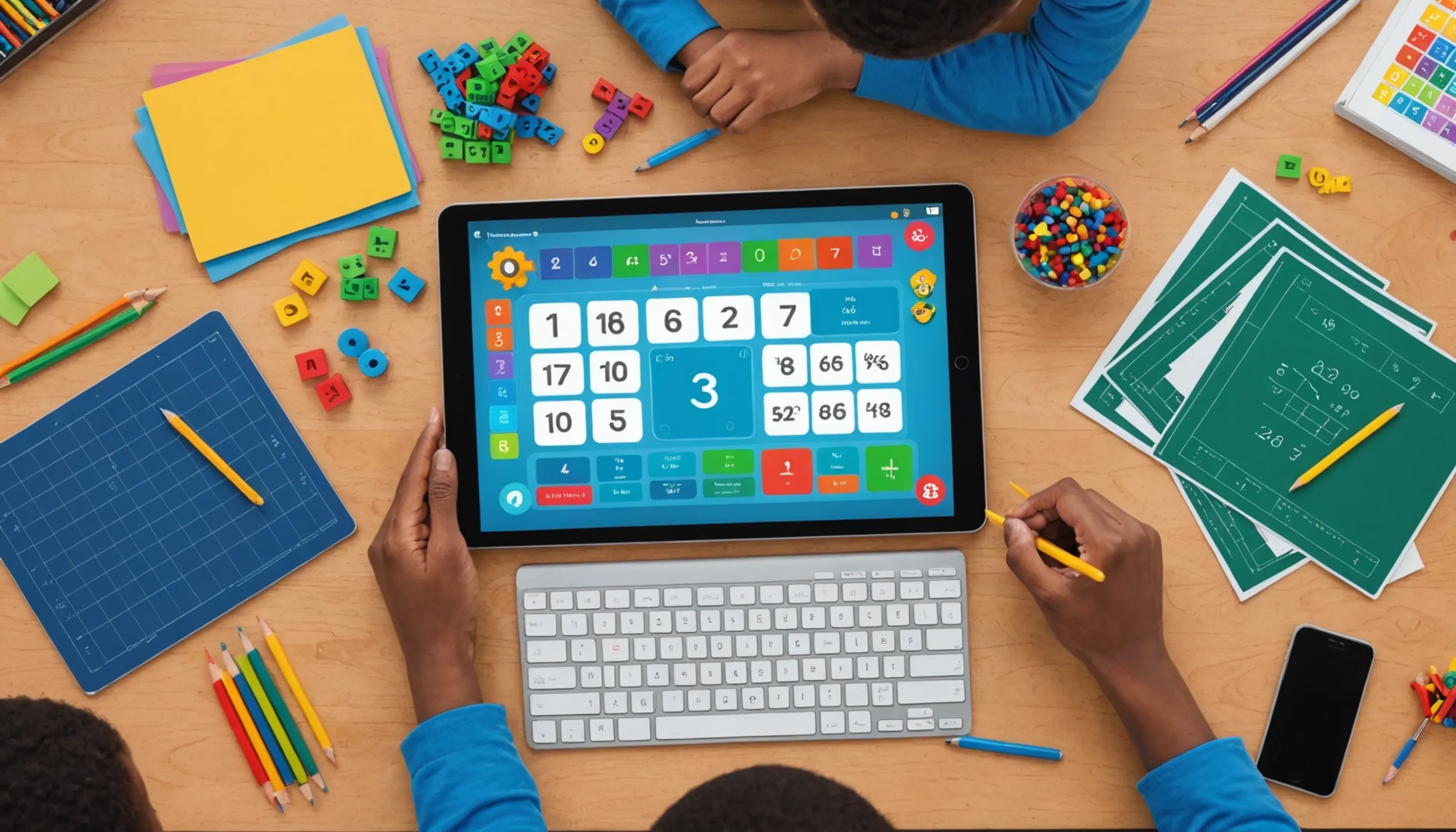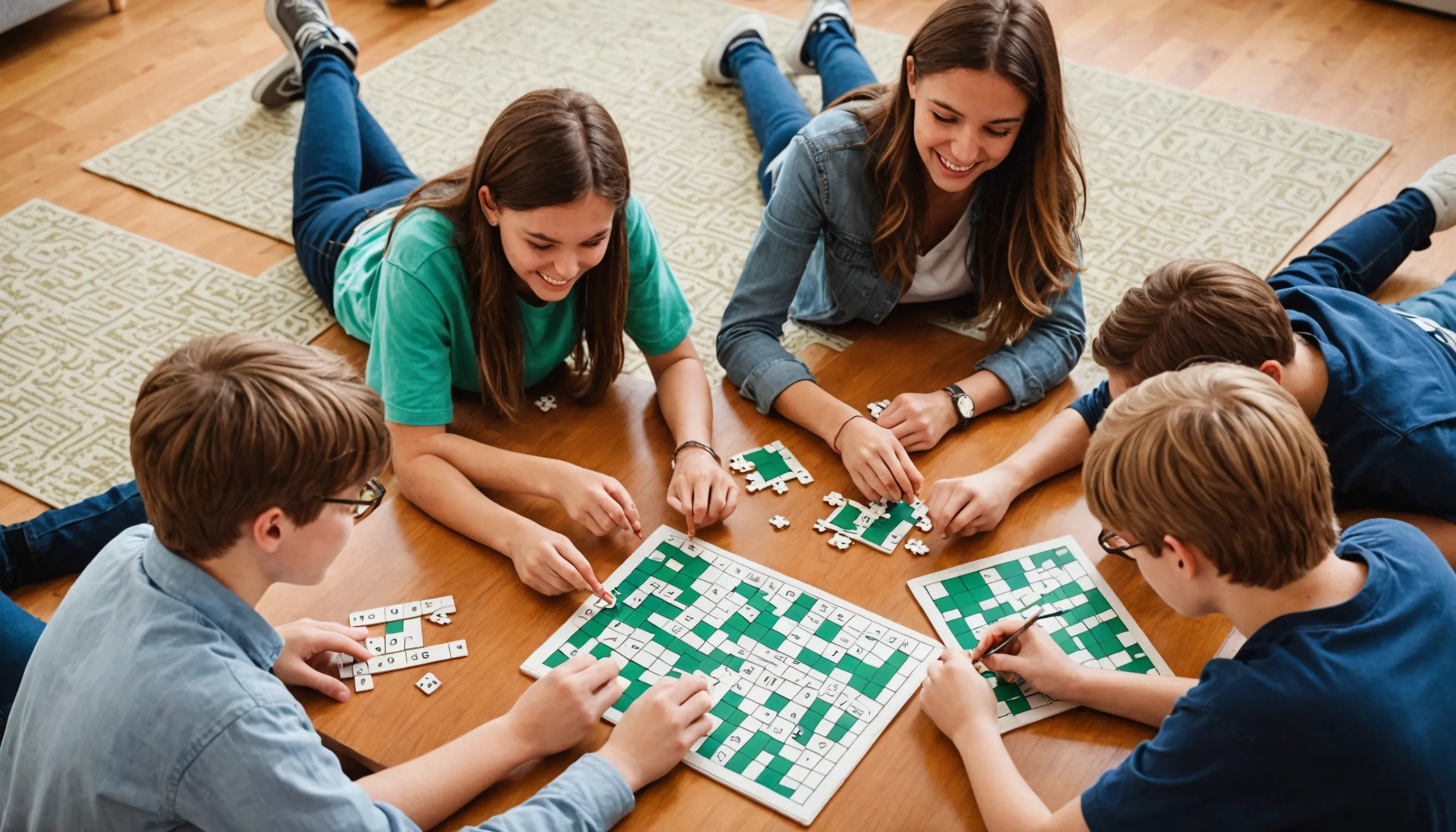Interactive Math Activities for Students
 HvWHenry van Wagenberg
HvWHenry van Wagenberg
Interactive Math Activities for Engaging Teenagers
Interactive math activities are crucial for engaging teenagers in learning. These activities not only make math fun but also enhance understanding and retention of concepts. By incorporating games, technology, and real-world applications, students can see the relevance of math in everyday life.
Engaging activities encourage collaboration among students, fostering a sense of community in the classroom. Moreover, they cater to different learning styles, ensuring that every student can participate and benefit. Ultimately, using interactive methods helps to create a positive attitude towards math, making it less intimidating and more accessible.
Benefits of Interactive Math Activities
Interactive math activities offer numerous benefits that significantly enhance the learning experience for teenagers. One of the primary advantages is that they promote active engagement. When students participate in hands-on activities, they are more likely to retain information and apply mathematical concepts effectively.
Additionally, these activities foster critical thinking and problem-solving skills. Teenagers learn to tackle challenges collaboratively, which encourages teamwork and communication. For instance, working in groups on math projects allows students to share ideas and approaches, leading to a deeper understanding of the subject matter.
Another important benefit is the development of a positive attitude toward math. Traditional methods can often make math feel like a chore, but interactive activities can transform learning into an enjoyable experience. As students engage with math through games, simulations, or technology, they begin to see math as a fun and relevant subject.
Moreover, interactive math activities cater to various learning styles. Visual learners benefit from graphical representations, while kinesthetic learners thrive in hands-on projects. This inclusivity ensures that all students can find ways to connect with the material.
Finally, these activities can help bridge the gap between theoretical concepts and real-world applications. By solving practical problems and engaging in simulations, students can see how math applies to everyday life, making the subject more relatable and essential.

Types of Interactive Math Activities
There are several types of interactive math activities that effectively engage students and enhance their learning experiences. Here are some popular options:
- Online Math Games: These games provide a fun and competitive way to practice math skills while reinforcing concepts.
- Hands-On Projects: Activities like building geometric shapes or conducting surveys allow students to explore math in a tangible way.
- Math Puzzles: Challenges such as Sudoku or logic puzzles promote critical thinking and problem-solving abilities.
- Collaborative Group Work: Group projects encourage teamwork, where students can discuss strategies and share solutions.
- Technology Integration: Tools like graphing calculators, apps, and interactive software can enhance lessons and make math more accessible.
By incorporating these diverse activities, educators can cater to different learning styles and keep students motivated in their math journey.
Online Math Games and Resources
Online math games and resources are powerful tools for enhancing student engagement and understanding of mathematical concepts. These platforms not only make learning enjoyable but also provide a wealth of practice opportunities tailored to different skill levels.
One popular resource is Khan Academy, which offers a wide range of interactive lessons and exercises. Students can progress at their own pace, receiving instant feedback that helps reinforce their learning. Similarly, Prodigy Math combines math practice with engaging role-playing games, making the subject more relatable and fun.
Another excellent resource is Math Playground, which features a variety of math games, logic puzzles, and problem-solving activities. This site allows students to apply their knowledge in a playful environment, fostering a love for math.
Additionally, platforms like IXL provide comprehensive practice across different grades and topics, ensuring that students can build a strong foundation in essential skills. These resources often include progress tracking, which allows both students and parents to monitor improvement over time.
Incorporating online math games and resources into the curriculum not only makes learning more dynamic but also helps students develop confidence in their abilities, ultimately leading to greater success in mathematics.

Hands-On Math Projects
Hands-on math projects are an effective way to engage students by connecting mathematical concepts to real-world applications. These projects allow teenagers to explore math in a tactile and interactive manner, making learning both enjoyable and memorable.
One popular hands-on project is creating geometric models using materials like straws, clay, or paper. Students can construct various shapes and explore properties such as volume and surface area. This kind of activity enhances spatial reasoning and helps them visualize abstract concepts.
Another engaging project involves budgeting for a hypothetical event, such as planning a party or a trip. Students can research costs, compare prices, and calculate totals, which teaches them valuable skills in addition to practical math applications.
Additionally, incorporating technology into hands-on projects can further enhance the experience. For example, using apps like GeoGebra allows students to create dynamic graphs and visualize mathematical relationships. They can also analyze data collected from experiments or surveys, reinforcing statistical concepts.
Hands-on math projects encourage collaboration, as students often work in groups, sharing ideas and strategies. This teamwork fosters communication skills and builds a sense of community in the classroom. Ultimately, these projects not only deepen students' understanding of math but also spark interest and enthusiasm for the subject.
Math Puzzles and Challenges
Math puzzles and challenges are excellent tools for enhancing problem-solving skills and logical thinking in students. These activities not only make learning fun but also encourage critical thinking and creativity. By presenting math in a playful context, students are more likely to engage with the material.
Popular types of math puzzles include logic puzzles, Sudoku, and crosswords that incorporate mathematical concepts. These puzzles can be tailored to different skill levels, making them accessible to a wide range of learners.
Challenges such as math scavenger hunts or escape room activities require students to solve problems collaboratively, promoting teamwork and communication. Additionally, incorporating technology through apps and online platforms can provide interactive puzzle experiences, making it easier for students to participate.
Overall, math puzzles and challenges are effective ways to reinforce concepts while fostering a positive attitude toward mathematics, ultimately leading to improved confidence and performance in the subject.
Creating Math Puzzles for Students
Creating math puzzles for students is a fantastic way to enhance their engagement and understanding of mathematical concepts. Puzzles can be tailored to suit various skill levels and learning styles, making them an effective teaching tool. Here are some strategies for designing engaging math puzzles.
First, identify the key concepts you want to reinforce. For example, if you are focusing on algebra, consider creating a puzzle that requires students to solve equations to unlock clues. This not only makes the learning process interactive but also encourages critical thinking.
Next, incorporate real-life scenarios. Designing problems that relate to everyday situations, such as budgeting for a trip or calculating discounts while shopping, helps students see the practical applications of math. This relevance can increase motivation and interest in the subject.
You can also utilize various formats for your puzzles, such as crosswords, riddles, or logic puzzles. Each format offers unique challenges and can cater to different learning preferences. For instance, a crossword might focus on vocabulary related to geometry, while a logic puzzle could involve sequencing numbers or shapes.
Lastly, encourage collaboration by having students work in pairs or small groups to solve the puzzles. This promotes communication and teamwork, allowing students to learn from one another. By creating math puzzles, educators can foster a love for math while helping students develop essential problem-solving skills.
Using Technology for Math Activities
Using technology for math activities has revolutionized the way students engage with mathematics. With the rapid advancement of digital tools, educators can now create interactive and dynamic learning experiences that cater to various learning styles. Technology not only enhances engagement but also provides opportunities for personalized learning.
One popular method is incorporating interactive software and apps that offer math exercises tailored to each student's skill level. Platforms like Prodigy and Kahoot! allow students to practice math concepts in a fun, game-like environment, making learning more enjoyable. These tools often include instant feedback, helping students identify areas for improvement.
Moreover, technology facilitates the use of virtual manipulatives, such as online graphing tools and geometric sketching software, which help students visualize complex concepts. Tools like GeoGebra enable students to explore mathematical relationships interactively, enhancing their understanding of geometry and algebra.
Additionally, educators can leverage online resources, such as video tutorials and interactive simulations, to supplement traditional instruction. Websites like Khan Academy provide a wealth of resources that students can access at their own pace, reinforcing classroom learning.
Finally, incorporating technology into math activities encourages collaboration and communication among students. Tools like Google Classroom or collaborative whiteboards allow students to work together on problems, share solutions, and learn from one another. By integrating technology into math activities, educators can create a more engaging and effective learning environment that prepares students for the digital world.
